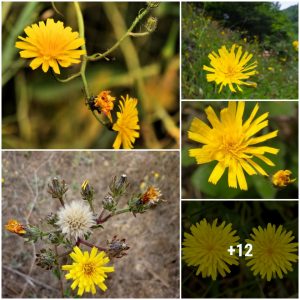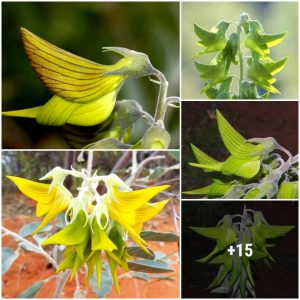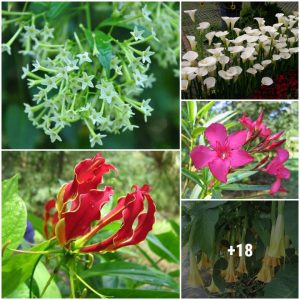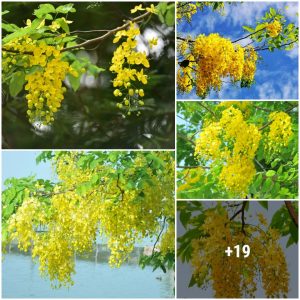
This amazing tropical shrub earns its name from the massive 10-inch trumpet shaped blooms that range in color from subtle shades of white, pink and yellow to striking red, orange and even green. Native to Central and South America this tender perennial cannot tolerate cold weather and must be grown as an annual in containers in cool climates but can be grown in the ground in USDA plant hardiness zones 9 through 12. It reaches a height of 20 feet, depending on the cultivar, but can be pruned to maintain it as a smaller shrub.
Light and Temperature Requirements
Angel’s Trumpet cannot tolerate a frost. If you live in an area where temperatures dip below 32 degrees, your Angel’s Trumpet plant will depend on you for protection. Do not set container grown plants outside until the temperatures have risen above 50 degrees in the daytime and all danger of frost has passed in your area. Likewise, bring the plant in to overwinter it when temperatures begin to drop into the 50s in the fall.
Angel’s Trumpet prefers full sun and does quite well in sunny locations in northern gardens, but it benefits from some noonday and afternoon shade in southern climates.
Watering
Angel’s Trumpet is a heavy feeder and needs plenty of water to support its prolific foliage and blooms. As a rule, it requires 3 inches of water a week. If your area does not receive 3 or more inches of rain, your Angel’s Trumpet plant will require supplemental water.
Container grown Angel’s Trumpet plants may require daily watering during the driest part of summer. Containers or pots heat up and dry out quickly in the summer sun.
Watch for signs of wilting and check the soil to determine if your Angel’s Trumpet plant needs water. If the soil feels dry 1 inch below the surface, it is time to water your Angel’s Trumpet plant.
Soil & Fertilizing
Angel’s Trumpet plants prefer humus-rich, well-drained, slightly acidic soil with a pH between 5.5 and 7. Add peat moss and compost or manure to the soil before planting Angel’s Trumpet plants in the ground. This promotes good aeration, improves drainage and provides slow-release nutrients to the roots of your plants. Peat moss also helps to lower the pH of the soil.
Use potting mixtures designed for Azaleas or make your own with equal parts all-purpose potting soil, compost (or well-rotted manure), peat moss and perlite or vermiculite for container grown Angel’s Trumpet plants.
Fertilize your Angel’s Trumpet plants once or twice a month with azalea or hydrangea fertilizer. This provides your plants with the nutrients they need to thrive while acidifying the soil as well.
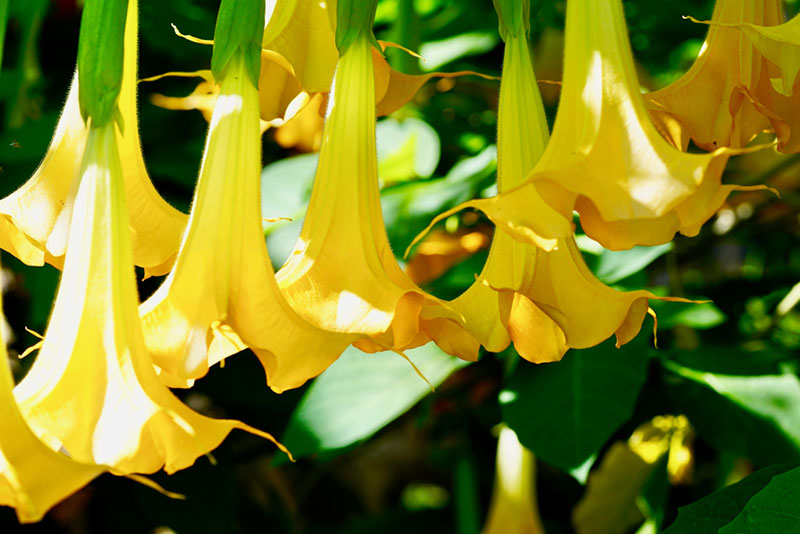
Deadheading and Pruning
You can prune your Angel’s Trumpet plant at any time to maintain its shape but do your first serious pruning in the fall after your tree forms the first “Y”. Prune the tips of the branches leaving at least 6 to 10 growing nodes above the “Y”. Branches from the nodes will produce the following year’s blooms. As your tree grows take the time to prune out dead or diseased branches or branches that cross over the center of the tree during fall pruning.
Container grown Angel’s Trumpet plants can be cut back to within a few inches of the soil before bringing them in for the winter. Place the pot in a cool, dark area for the winter and water only when the soil dries out. The plant needs a period of dormancy but cannot tolerate freezing temperatures. Move it to a warm location that receives bright light in the spring when new growth appears.
Deadheading the plant by removing old or faded blooms will encourage further blooming and improve the appearance of the plant.
Propagation
Angel’s Trumpet roots easily from stem cuttings. Cut a 4-to-6-inch section of new growth in the spring or early summer. Remove all but 2 leaves on the end. Dip the cut end in rooting powder and plant the cutting in moist potting medium. Keep the cuttings in an area that receives bright, indirect light until roots form. To test for root formation, gently tug on the cutting. If the plant resists your efforts roots have formed.
Growing Angel’s Trumpet from Seed
Angel’s Trumpet plants can be started from seed. Here’s how:
- Soak the seeds overnight.
- Fill individual pots or seed trays with moist seed starter.
- Press the seeds into the soil, but do not cover them. The seeds need light to germinate.
- Cover the pots with plastic wrap to hold in moisture.
- Place them under a grow light and leave the light on for up to 18 hours a day until the seeds germinate in 3 to 4 weeks.
- Transplant the seedlings to larger pots when they get their second set of true leaves.
Cautions
According to the Colorado State University all parts of the Angel’s Trumpet plant are toxic to pets and humans. They should be grown in areas where kids and pets cannot reach them. The greatest risk of poisoning is through ingestion but physical contact with the leaves can cause poisoning if the microscopic alkaloids contact mucus membranes in the eyes and nose.
